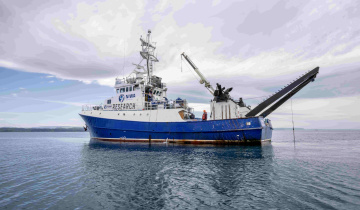Humans don't always make it easy on fish to get where they are going. New Zealand's first national set of Fish Passage Guidelines – co-developed by NIWA - is expected to help.
Migratory species such as giant kokopu and longfin eel need to migrate to access different habitats for feeding, reproduction and to complete their life cycles. Sadly, they are threatened by barriers like dams, weirs and culverts. These barriers can disrupt the natural flow of rivers and impede fish migration.
Years in the making, the guidelines were a collaborative effort between NIWA and the Department of Conservation - overseen by a multi-stakeholder Fish Passage Advisory Group.
The guidelines set out recommended practice for designing in-stream structures under four metres high and mitigating existing barriers to passage. Since being launched in April, they have been used by several regional councils and consultants.
The biodiversity benefits of fish friendly stream structures are manifold. Many of our migratory native fish are threatened. They make up a crucial link in the food chain and play an important role in healthy and productive river systems.
Additionally, the guidelines are likely to help preserve the culturally important practice of whitebaiting. Whitebait are the juveniles of migratory galaxiid species, which live as adults in rivers and streams.
The guidelines were developed to help infrastructure designers and managers, waterway managers, environmental officers, iwi and local communities with understanding and promoting better management of fish passage requirements in New Zealand.








